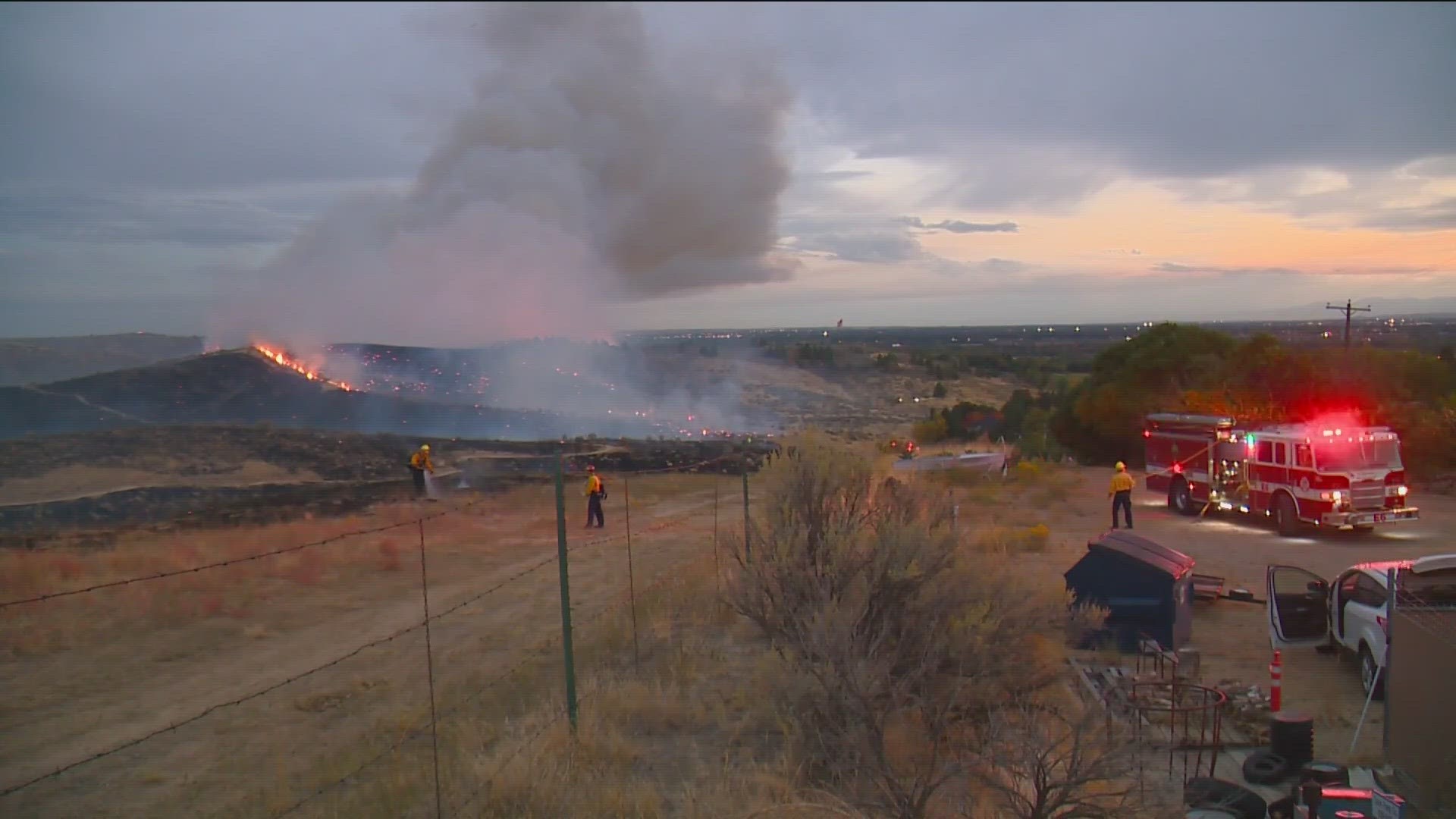BOISE, Idaho — Many in the Treasure Valley saw fresh snow on the ground Tuesday morning. But before long, Idaho will likely be seeing smoke in the skies for wildfire season.
The U.S. Fire Administrator and other national fire leaders travelled to Boise to highlight the wildfire challenges facing America during a conference at the National Interagency Fire Center on Tuesday.
The event was to kick off a Fire Stop Tour, with multiple agencies coming together to speak with one voice to bring attention to wildfire issues.
"It is a year that marks the 50th anniversary of the America Burning Report that was released in 1973," U.S. Fire Administrator Dr. Lori Moore-Merrell said. "And we stand here together today, as the nation's fire service to tell you that America is still burning. Across the nation, fire is a threat to individuals, to public safety, and it's a threat to our homeland security."
There were 69,000 wildfires across the United States in 2022.
"Over the last five years, we have had 68% more land area burned than in the last three decades," Dr. Moore-Merrell said.
One of the biggest threats happens in wildland urban interface areas, where buildings meet undeveloped land.
"When wildfire enters the interface, the effects on communities can be catastrophic," Dr. Moore-Merrell said. "Including overwhelmed response capabilities, tragic loss of life, and socio-economic devastation."
About one-third of the US population lives in the wildland urban interface, including parts of Boise.
"The truth, here in Idaho, every wildfire could become an interface fire," Pat Morrison, assistant general president for the International Association of Fire Fighters' Health, Safety, and Medical Division said. "It's not just in the West. Firefighters in every state, every municipality are coming face-to-face with this ever-growing threat."
In order for firefighters to keep themselves -- and in turn, or communities safe, fire officials say the proper training is crucial - especially for the wildland urban interface.
"The one piece of training that has been missing is the interface," Dr. Moore-Merrell said. "In other words, structural fires know how to mitigate when there's one house on fire. But when there's a dozen, or 1000, it's a different scenario. Strategies and tactics must change for their own safety."
Officials say that firefighters are facing many challenges, including shortages of recruits, exposure to carcinogens during fires, and behavioral health struggles.
"Firefighters develop PTSD at a similar rate to military service members returning from combat," Ernie Mitchell, former U.S. Fire Administrator, and board of the National Fallen Firefighters Foundation said. "About 20% of firefighters and paramedics meet the criteria for PTSD at some point during their career."
The Fire Safety Research Institute says fires are growing in intensity, size, and destructiveness. Synthetic materials used in modern furniture, and lithium-ion batteries only increase the fire dangers.
"Fire keeps getting faster," Dr. Steve Kerber, vice president of the Fire Safety Research Institute said. "In fact, today you have the least amount of time to safely exit your home in the event of a fire than in any other time in history."
The U.S. Fire Administration hosted the first Fire Prevention and Control Summit since 1947 last October. During the summit, national fire service leaders made the five recommendations to national leaders from the Biden Administration.
The following recommendations outline a national strategy to handle America's fire issues:
- Prepare all firefighters for the climate-driven increase in wildfires in the wildland urban interface (WUI) by providing them with the proper training and equipment.
- Invest in a national apprenticeship program to address the firefighter shortage and make the fire service more diverse and inclusive.
- Establish a comprehensive firefighter cancer strategy that invests in research, provides access to screening for firefighters, and reduces and eliminates PFAS exposure.
- Provide behavioral health resources and suicide prevention initiatives for all firefighters.
- Create safer communities by implementing and enforcing codes and standards, especially in the WUI and underserved and vulnerable populations, and provide affordable and fire-safe housing.
Watch more Local News:
See the latest news from around the Treasure Valley and the Gem State in our YouTube playlist:

